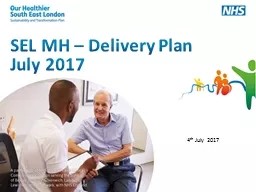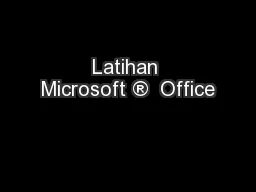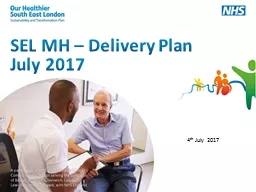PPT-SEL MH – Delivery Plan
Author : trish-goza | Published Date : 2019-03-16
July 2017 4 th July 2017 Draft in progress Delivery Plan Contents Page Title 3 Introduction 4 Milestone tracker 7 Children amp Young People 19 Perinatal 32 IAPT
Presentation Embed Code
Download Presentation
Download Presentation The PPT/PDF document "SEL MH – Delivery Plan" is the property of its rightful owner. Permission is granted to download and print the materials on this website for personal, non-commercial use only, and to display it on your personal computer provided you do not modify the materials and that you retain all copyright notices contained in the materials. By downloading content from our website, you accept the terms of this agreement.
SEL MH – Delivery Plan: Transcript
Download Rules Of Document
"SEL MH – Delivery Plan"The content belongs to its owner. You may download and print it for personal use, without modification, and keep all copyright notices. By downloading, you agree to these terms.
Related Documents














